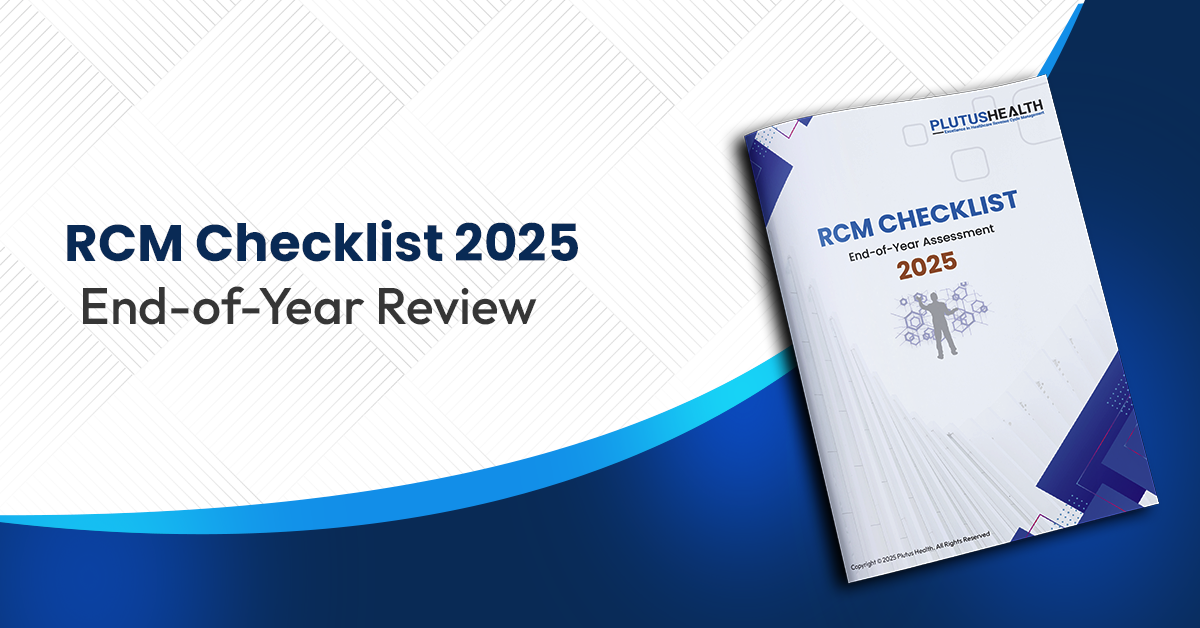Workforce Challenges & Operational Efficiency in ABA
An organization's greatest asset is its workforce. When individuals unite toward a shared purpose, achievement follows at its highest potential. This holds especially true in high-demand settings, such as ABA organizations, hospitals, and therapy centers, where a motivated and resilient staff is essential for delivering the best possible care.
However, with burnout affecting over 67% of clinicians, these are no longer just HR issues; they're serious financial threats.
Our latest blog offers a clear overview of today's workforce challenges in ABA, along with actionable solutions and opportunities to enhance operational efficiency across your organization.
Workforce Crisis in ABA
1. Staff Turnover and Burnout
According to the Behavioral Health Center of Excellence, the industry's median turnover rate is 65%. Burnout is widespread, with over 72% of BCBAs and RBTs reporting moderate to severe stress. The financial impact is severe:
- Recruiting and onboarding a new RBT or BCBA can cost up to 30–200% of their annual salary.
- Lost productivity affects authorized hours and client satisfaction.
- Reduced continuity of care diminishes outcomes and increases churn.
This is no longer just an HR metric; it's a core operational risk.
2. Root Causes of ABA Team Attrition
- Licensing Bottlenecks - BCBA certification and credentialing delays can stretch to 6–9 months, particularly during peak exam cycles. These delays slow the talent pipeline and strain access to care.
- Compensation & Policy Gaps - Wages in ABA aren't keeping pace with inflation or competitive industries. Reimbursement rates remain flat, making it more challenging to retain top talent while maintaining high-quality care.
- Administrative Burden - Clinicians spend a disproportionate amount of time on documentation, billing, and compliance. This ongoing administrative burden significantly contributes to burnout and disengagement.
3. Operational Inefficiency: The Hidden Cost
Operational inefficiency is one of the most underestimated threats to ABA growth. Staff lose nearly 10 hours per week to redundant admin work (source). Chronic issues like duplicate records, scheduling errors, and denied claims compound stress and slow down performance, clinically and financially.
Strategic Solutions for ABA Leaders
1. Enhance Recruitment & Retention
- Career Pathways & Compensation
Rather than just hiring, build careers. Offering operational and data roles to BCBAs and structured growth paths to RBTs has helped organizations reduce turnover by up to 30%. Transparency improve trust and retention of the employees as well. - Emotional Support & Work-Life Balance
Burnout is more than just fatigue; it's a chronic state of disengagement. Solutions such as flexible scheduling, peer support, and wellness stipends can significantly enhance morale and reduce attrition. - Streamlined Onboarding & Mentorship
Comprehensive onboarding, including mentorship and case-sharing, fosters engagement and reduces early exits. A strong start often leads to long-term retention.
2. Leverage Technology & Workflow Automation
- AI-Supported Admin Tasks
Plutus Health's RPA bot, Zeus, automates eligibility checks, denial prevention, and claims follow-up, cutting administrative time by 5–10 hours per week and delivering 95% clean claim accuracy. - Integrated Practice Management Platforms
Software like Artemis ABA helps consolidate documentation, billing, and scheduling, thereby reducing administrative clutter and allowing clinicians to refocus on delivering care.
3. Optimize Operations for Efficiency
- Caseload & Scheduling Optimization
Smart scheduling tools that balance caseloads and fill gaps reduce burnout and maximize capacity. AI checks can prevent double-booking and no-shows. - Data-Driven Decisions
Track utilization, turnover, and payroll metrics in real-time dashboards. Make informed decisions in leadership huddles to align clinical and financial goals. - Outsource RCM & Support Tasks
Outsourcing credentialing, billing, and collections allows your clinical team to focus on care. Plutus clients consistently experience a 30% reduction in denials and enhanced collections.
Real Results from Operational Strategy in Action
One leading ABA network, serving over $200 million in annual revenue, faced severe challenges with legacy accounts receivable (A/R), inefficient eligibility workflows, and manual claim follow-ups.
Enter Plutus Health.
By automating key functions like claims status checks and A/R workflow management, the organization:
- Cut RCM overtime hours significantly
- Improved staff satisfaction and scheduling stability
- Reduced legacy A/R by $2 million
- Achieved a 97% net collection rate (NCR), a major jump in efficiency and cash flow
But what makes this more than an automation story is its impact on people. With smarter workflows, the ABA network freed up clinical teams to focus on client care rather than paperwork.
Workforce stability and operational efficiency are no longer nice-to-haves—they are the foundation of value-based, outcome-focused ABA care.
Liked the blog? Share it
FAQs


ABA providers are grappling with high staff turnover (up to 65%), rising burnout, administrative overload, and stagnant reimbursement rates. These challenges directly impact care continuity, clinical outcomes, and operational performance.


Operational inefficiency costs ABA teams up to 10 hours per staff member per week, contributing to burnout, denied claims, and longer accounts receivable (A/R) cycles. These inefficiencies ultimately result in reduced revenue and patient dissatisfaction.


Burnout leads to costly turnover, lower client retention, and decreased productivity. Recruiting and replacing a BCBA or RBT can cost up to $5,000 per hire, plus months of lost revenue and disruption to morale.


High-performing ABA organizations invest in clear career pathways for BCBAs and RBTs, align compensation with market benchmarks, and foster peer-led mentorship, flexible schedules, and wellness programs.


Automation tools like Plutus Health's Zeus streamline eligibility verification, denial management, and billing, reducing manual workloads by 5–10 hours weekly per clinician and improving clean claim rates by 95%.


Outsourcing revenue cycle management can improve collections, reduce denials by up to 30%, and free clinicians from billing-related admin tasks, resulting in better client care and financial outcomes.


One $200 million ABA network partnered with Plutus Health to automate eligibility and accounts receivable (A/R) processes. The result: $2M reduction in legacy A/R and a 97% Net Collection Rate.


By improving operational efficiency, investing in technology, and ensuring workforce stability, ABA leaders can align outcomes with reimbursement. Plutus Health supports this transition with scalable RCM and automation strategies.
FAQs


ABA therapy billing is the process of submitting claims to insurance or Medicaid for Applied Behavior Analysis services provided to individuals with autism or developmental disorders. It includes using correct CPT codes, proper documentation, and adherence to payer-specific policies.


Common CPT codes for ABA therapy in 2025 include:
- 97151 – Assessment and treatment planning
- 97153 – Direct therapy with the patient
- 97155 – Supervision and modification of behavior plan
- 97156 – Family adaptive training
- Always check with payers for any annual changes.


To bill Medicaid for ABA services, providers must ensure credentialing is complete, services are pre-authorized, and claims use the correct codes and modifiers. Medicaid requirements vary by state, so always follow state-specific billing rules.


Common ABA billing mistakes include:
- Incorrect or missing CPT codesplan
- Lack of documentation or treatment
- Uncredentialed providers rendering services
- Submitting duplicate or late claims


Without proper credentialing, providers can’t get reimbursed. Insurance and Medicaid require that BCBAs, RBTs, and organizations are credentialed and contracted. Delays in credentialing often cause revenue losses and claim rejections.
FAQs


CMS proposes a 2.4% increase in Medicare ASC payment rates, contingent on meeting ASCQR quality reporting requirements. Plutus Health helps ASCs meet these compliance benchmarks by integrating quality reporting data into RCM workflows, ensuring eligibility for full payment updates.


The ASC Covered Procedures List will expand by 547 procedures, including cardiology, spine, and vascular surgeries. Plutus Health supports expansion into new service lines by customizing RCM processes for high-acuity procedures, minimizing claim denials during the transition.


Site-neutrality narrows the payment gap with hospital outpatient departments, enhancing ASCs' cost-efficiency appeal. Plutus Health helps leverage this advantage in payer negotiations by providing performance dashboards and cost-justification analytics to secure stronger reimbursement terms.


Complex procedures increase denial risk and slow cash flow. Plutus Health's automation-first RCM model delivers 95%+ clean claim rates, reduces A/R days, and safeguards margins, even as your case mix becomes more complex.
FAQs


A hybrid RCM model combines in-house tasks like scheduling, intake, and patient communication with outsourced billing support for claims, denials, and A/R follow-up. Plutus Health enables this model with automation and expert teams.


Frequent CPT code updates, variable session lengths, high no-show rates, and sensitivity around patient collections make behavioral health billing uniquely challenging. Hybrid RCM helps strike a balance between compliance and patient care.


Tasks requiring patient interaction—like intake, eligibility checks, copay collection, and documentation—are best kept in-house, while backend processes can be outsourced.


Outsourcing denial management, claims scrubbing, and payment posting improves clean claim rates, reduces A/R days, and scales capacity without adding staff.


Plutus Health delivers 97%+ clean claim rates, AI-powered denial prediction, and 48-hour claim turnaround. Our hybrid RCM solutions provide behavioral health CFOs with visibility and control, while enhancing financial performance.
FAQs


Payment complexity, high out-of-pocket costs, increasing denials, and value-based care requirements are pushing providers toward more transparent, tech-supported payment systems.


Patients now act like consumers. They expect clear cost estimates, simple bills, digital payment options, and flexible financing.


AI, automation, and digital tools streamline estimates, reduce denials, support payment plans, and allow faster collections through mobile and online payments.


Complex billing questions, insurance confusion, and financial stress require a compassionate approach. Advocates guide patients and protect trust in clinical care.


Plutus Health supports providers with AI-driven denial prevention, predictive analytics, digital payment tools, patient financing, and a seamless platform, such as AnodynePay.















































